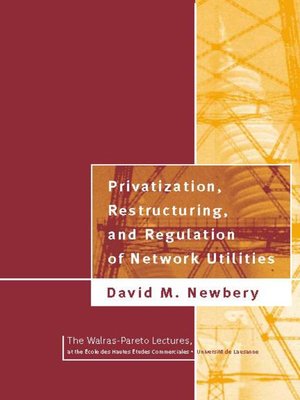Privatization, Restructuring, and Regulation of Network Utilities
ebook ∣ Walras-Pareto Lectures
By David M. Newbery

Sign up to save your library
With an OverDrive account, you can save your favorite libraries for at-a-glance information about availability. Find out more about OverDrive accounts.
Find this title in Libby, the library reading app by OverDrive.



Search for a digital library with this title
Title found at these libraries:
| Library Name | Distance |
|---|---|
| Loading... |
Network utilities, such as electricity, telephones, and gas, are public utilities that require a fixed network to deliver their services. Because consumers have no choice of network, they risk exploitation by network owners. Once invested, however, a network's capital is sunk, and the bargaining advantage shifts from investor to consumer. The investor, fearing expropriation, may be reluctant to invest. The tension between consumer and investor can be side-stepped by state ownership. Alternatively, private ownership and consumers' political power can be reconciled through regulation. Either way, network utilities operate under terms set by the state.David Newbery argues that price-setting rules comprise only part of the policy agenda. Network utilities pose special problems of ownership and regulation. He discusses the history of ownership and regulation, privatization, and theories of regulation. Examining three network utilities in detail—telecoms, electricity, and gas—he contrasts the regulatory approaches of Britain and the United States. He also looks at liberalization in a variety of other countries.History shows that the mature forms of regulatory institutions are remarkably similar under both public and private ownership. This raises obvious questions such as: Will the forces that caused convergence to regulated vertical integration in the past reassert themselves? Can the benefits of competition be protected against the pressure to reintegrate? Will different utilities differ in their form and structure? A full understanding of the forces shaping regulatory institutions is necessary to answer these important questions.







